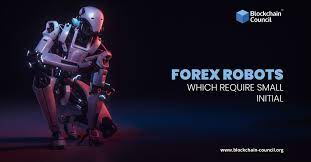In recent years, the world of finance has witnessed a significant technological transformation, and one of the most notable innovations to emerge is the Forex robot. These automated trading systems have revolutionized the way individuals and institutions engage in foreign exchange (forex) markets, offering unprecedented forex robot, precision, and accessibility. As the global forex market continues to expand, with an average daily trading volume exceeding $6 trillion, the adoption of forex robots is poised to reshape the landscape of currency trading.
What are Forex Robots?
Forex robots, also known as expert advisors (EAs) or automated trading systems, are software programs designed to execute trades in the forex market on behalf of traders. These algorithms are based on predefined rules and parameters, allowing them to analyze market conditions, identify trading opportunities, and execute transactions without human intervention. By utilizing advanced mathematical algorithms and technical indicators, forex robots aim to capitalize on market inefficiencies and fluctuations with speed and precision that surpass human capabilities.
How Do Forex Robots Work?
Forex robots operate on a set of predetermined rules programmed by developers or traders. These rules typically include parameters for entry and exit points, risk management, and trade execution criteria. Upon activation, the robot continuously monitors the forex market in real-time, analyzing price movements, economic indicators, and other relevant factors to identify potential trading opportunities.
Once a favorable trade setup is detected, the forex robot automatically executes the trade according to its programmed instructions. This process eliminates the emotional biases and psychological factors that often influence human decision-making in trading, leading to more disciplined and consistent trading outcomes.
Benefits of Forex Robots
The adoption of forex robots offers several compelling advantages for traders and investors:
- 24/7 Trading: Unlike human traders who are limited by time constraints and physical endurance, forex robots can operate 24 hours a day, seven days a week, without the need for rest or breaks. This enables them to capitalize on trading opportunities across different time zones and market sessions, including periods of high volatility and liquidity.
- Precision and Consistency: Forex robots execute trades with unparalleled speed and accuracy, adhering strictly to predefined trading rules and parameters. This eliminates the inconsistencies and errors often associated with manual trading, resulting in more consistent performance over time.
- Emotion-Free Trading: Human emotions such as fear, greed, and hesitation can significantly impact trading decisions and lead to irrational behavior. Forex robots operate purely based on mathematical algorithms, devoid of any emotional biases, thereby minimizing the risk of impulsive or irrational trading decisions.
- Backtesting and Optimization: Forex robots can be backtested using historical market data to assess their performance and optimize their parameters for maximum efficiency. This allows traders to refine their strategies and improve their profitability over time.
- Diversification and Risk Management: By deploying multiple forex robots with different strategies or trading algorithms, traders can diversify their trading portfolios and mitigate risk. Additionally, forex robots can incorporate risk management techniques such as stop-loss orders and position sizing to protect against significant losses.
Challenges and Considerations
While forex robots offer compelling benefits, they are not without challenges and considerations:
- Market Conditions: Forex robots operate based on predefined rules and parameters, which may not always adapt effectively to rapidly changing market conditions or unexpected events. As a result, there is a risk of suboptimal performance or losses during periods of extreme volatility or unusual market behavior.
- Over-Optimization: Excessive backtesting and optimization of forex robots can lead to overfitting, where the algorithm performs well on historical data but fails to generalize to future market conditions. Traders must strike a balance between optimizing their robots for historical performance and ensuring robustness in real-time trading.
- Technical Issues: Like any software program, forex robots are susceptible to technical glitches, connectivity issues, and system failures. Traders should monitor their robots regularly and have contingency plans in place to address any technical issues promptly.
- Lack of Human Judgment: While forex robots excel at executing predefined trading strategies, they lack the intuition, judgment, and creativity of human traders. There are certain market conditions or scenarios where human intervention and discretion may be necessary to make informed trading decisions.
Conclusion
Forex robots have emerged as powerful tools for traders and investors looking to automate their trading activities and capitalize on opportunities in the dynamic forex market. With their speed, precision, and ability to operate around the clock, these automated systems offer a compelling alternative to traditional manual trading methods. However, traders must exercise caution and diligence in their use of forex robots, understanding their limitations and implementing robust risk management practices. Ultimately, the successful integration of forex robots into trading strategies requires a balanced approach that combines automation with human judgment and expertise. As technology continues to advance and algorithms become increasingly sophisticated, the role of forex robots in shaping the future of currency trading is poised to expand further, offering new possibilities and opportunities for market participants worldwide.
